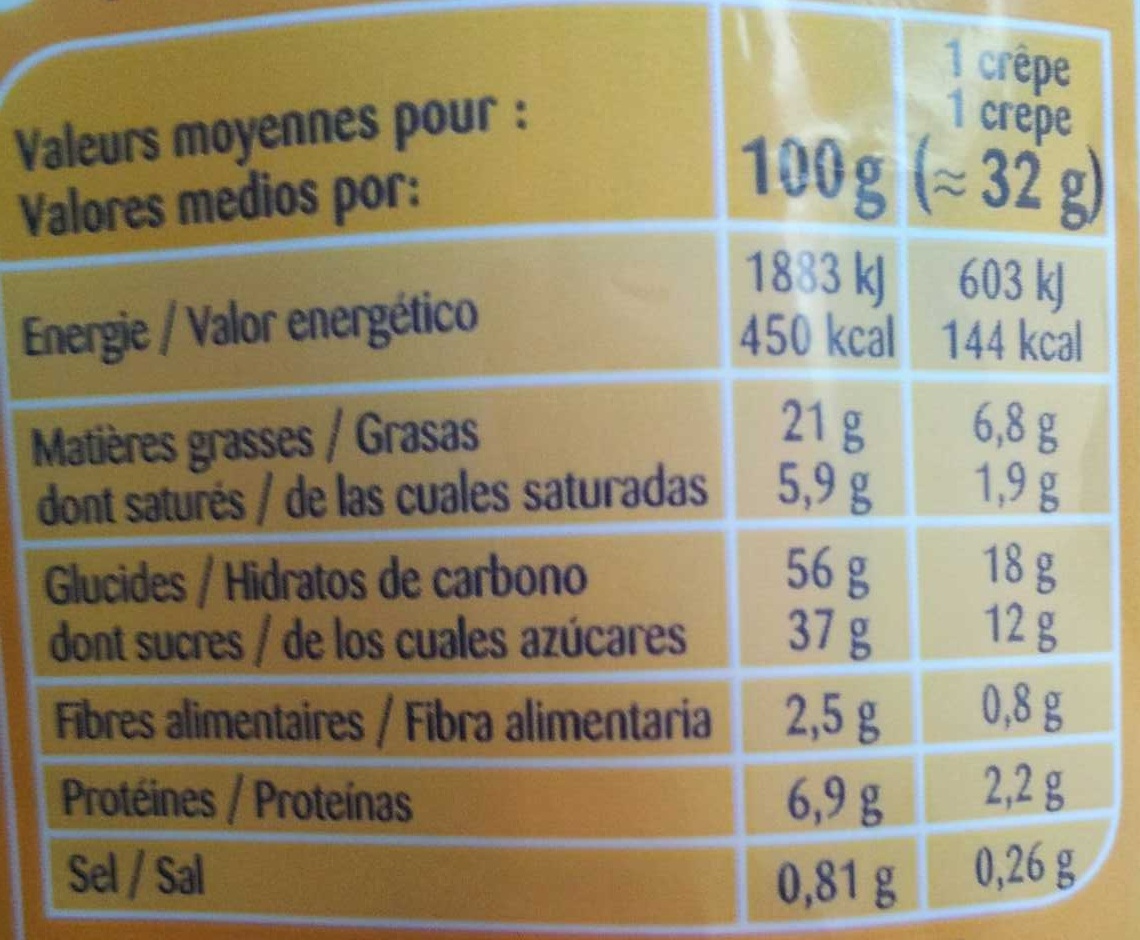Crêpes🥞 au Chocolat 🍫 - Carrefour - 256 g (8 x 32 g)
This product page is not complete. You can help to complete it by editing it and adding more data from the photos we have, or by taking more photos using the app for Android or iPhone/iPad. Thank you!
×
Some of the data for this product has been provided directly by the manufacturer Carrefour.
Barra-kodea: 3560070463800 (EAN / EAN-13)
Izen arrunta: 8 Crêpes avec un fourrage (40%) au chocolat.
Kopurua: 256 g (8 x 32 g)
Ontziratzea: en:Plastic, en:Bag
Markak: Carrefour
Kategoriak: en:Meals, en:Crêpes and galettes, Krepe, en:Filled crêpes, en:Sweet filled crêpes, en:Filled crêpes with chocolate, en:Sugared crêpes
Etiketak, ziurtagiriak, sariak:
en:No preservatives, en:French milk, en:Green Dot, en:Made in France, en:No palm oil, Nutriscore, en:Lait-francais-french-milk, fr:35 % de lait frais entier
Origin of the product and/or its ingredients: Ces crêpes sont fabriquées en Bretagne avec du lait frais entier, de la farine de blé et des œufs extra-frais origine France et du chocolat issu de fèves de cacao de diverses origines.
Producer: Fabriqué en France par EMB 29103E pour Interdis.
Traceability code: FR 29.181.601 CE - Plouédern (Finistère, France), EMB 29103E - Landerneau (Finistère, France)
Dendak: Carrefour, Carrefour Market, Carrefour City
Matching with your preferences
Other information
Other information: Cette crêpe savoureuse et généreuse avec son fourrage au bon goût de chocolat a été fabriquée avec du lait frais entier et est idéale pour le goûter de vos enfants. Elle peut s'emporter partout grâce à son sachet individuel ! Lait origine France Fabriqué en France Picto 8 x "pochon individuel"
Conservation conditions: À conserver dans leur emballage, dans un endroit frais et sec.
Customer service: Interdis - TSA 91431 - 91343 MASSY Cedex - France
Report a problem
Datuen iturria
Product added on by openfoodfacts-contributors
Last edit of product page on by org-carrefour.
Produktuaren orria -gatik editatua acuario, carrefour, consus-france, date-limite-app, dorado-jerome, driveoff, ecoscore-impact-estimator, kiliweb, packbot, roboto-app, spotter, tacite, thaialagata, yuka.WWZwYUtJa1ArZVlGdlAwWjVpM3dvZXdseGJ5RWNVeWxNdlVMSWc9PQ, yuka.ZTQ0QU03b2x1ZUVTZ1Awbjl5cU41WTF5L3J5UlJsbUhFOHRLSUE9PQ.












